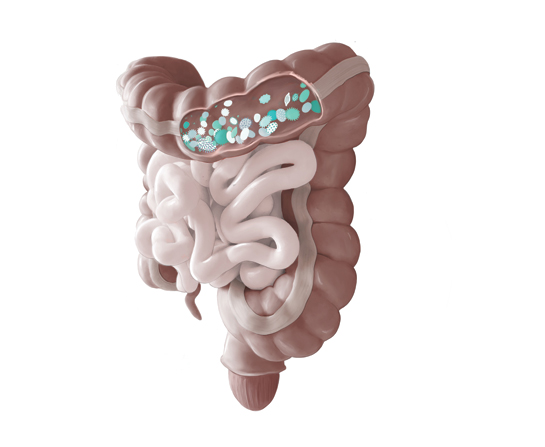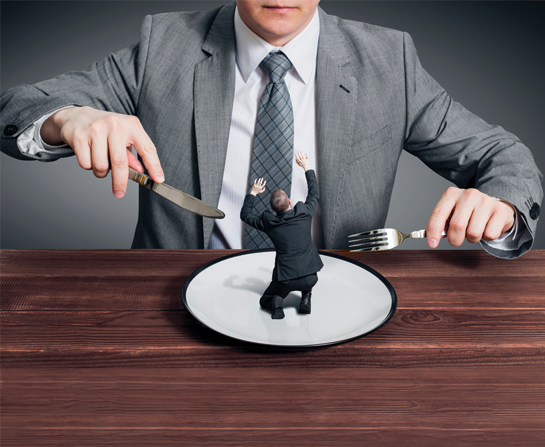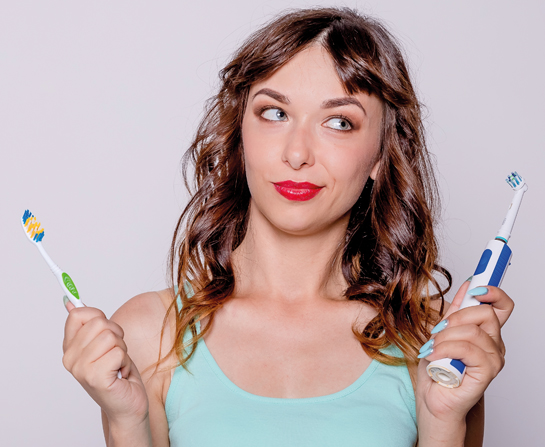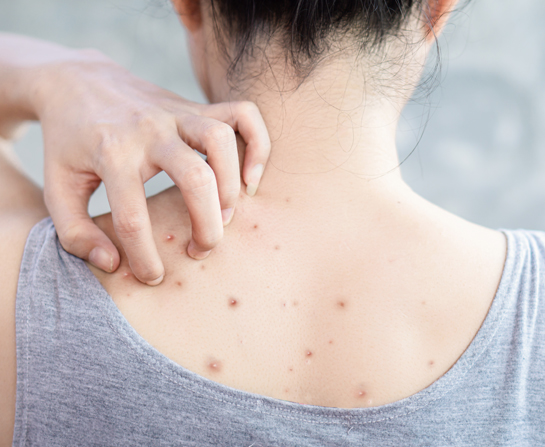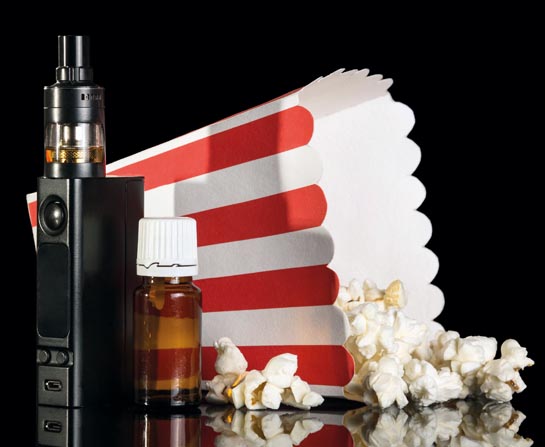WORDS LIM TECK CHOO
In 2019, many news outlets featured the story of a 17-year-old in Canada who was treated for a condition called popcorn lung disease, which can be life threatening. It was alleged that his condition was due to his regular vaping and marijuana habit.
The incident actually happened a while back, and it became news only after the medical team published a paper on the case in the Canadian Medical Association Journal. The case was considered noteworthy because of two reasons:
- popcorn lung disease itself is a rare disease, and
- this is a case that indicates a link between vaping and popcorn lung disease.
Before we go on, first let’s review the incident based on the medical team’s account in the paper.1
POPCORNS IN THE LUNG?
The teenager suffered from severe and prolonged coughing fits. His coughs are wet (there is phlegm produced) and he also suffers from fever and prolonged, laboured breathing (dyspnoea).
He was first admitted into the emergency department when he developed pneumonia. Five days after he was discharged, he was back again, this time for severe dyspnoea, malaise, and nausea.
The healthcare team diagnosed his condition as bronchiolitis obliterans, also called obliterative or constrictive bronchiolitis. This rare condition is more popularly known as popcorn lung disease.

What’s that?
What happens is that the smallest airways in the lungs, called the bronchioles, become inflamed and even damaged. This causes constant irritation to the lung tissues, hence the chronic coughs and phlegm formation.2
Furthermore, when the areas of damage heal, scar tissues can form at those areas. Extensive formation of such scars can cause the air passages to become narrow or even completely blocked altogether.2
As a result, over time, the affected person will find it increasingly harder to breathe, and their body becomes deprived of much-needed oxygen. If this condition is left unchecked, death will eventually follow.2
Can this be treated? Unfortunately, to date we don’t have any treatment that can reverse the damage in the lungs.
However, the progress of the disease can be kept in check with medications such as antibiotics, corticosteroids, and immunosuppressants.2
Additionally, cough suppressants may be useful to manage coughing fits, and oxygen therapy can help those affected by this disease to breathe more comfortably.2
As for the teenager, the report shares that, at the time of its publication, he still had issues with movement and carrying out physical activities, but the medical team was optimistic about his chances of recovery.
Wait, so despite its name, the disease has nothing to do with popcorns?
Illustrations of the alveolus in the lung may resemble a popcorn at times, but the term ‘popcorn lung’ stems from how this disease affected a significant number of workers in American popcorn factories.
When it comes to popcorns, most Malaysians consider it a delicious snack to be enjoyed at the movies. In the US, it is big business—the country, in fact, is the top producer of ready-to-eat or microwave popcorns in the world, with the average US citizen consuming 45 quarts (about 1.4 kilogram) of popcorns every year!3
I can’t believe it’s not butter! To cut costs, many microwave popcorn manufacturers use artificial flavouring instead of butter. A commonly used ingredient in artificial butter flavouring is the alpha-diketone, 2,3-butanedione or diacetyl. 4,5
In 2000, it was reported in the US that eight former microwave-popcorn factory workers had developed bronchiolitis obliterans. Of the eight, four were very sick, awaiting lung transplant. Researchers of the US National Institute of Occupational Safety and Health (NIOSH) eventually identified the culprit to be vapours that were produced when butter flavourings were added to the popcorn. More specifically—diacetyl. The fact that the same disease was also observed among workers in coffee plants and in plants that manufacture diacetyl corroborated this finding.5,6
Out with diacetyl! A flurry of lawsuits from ex- and current workers were quickly filed against manufacturers of microwave popcorns in the US. As it always happens when it hit where it hurts the most (their pockets), the popcorn industry was pretty quick to take action. Today, diacetyl is no longer used in the manufacture of microwave popcorns.
“TODAY, DIACETYL IS NO LONGER USED IN THE MANUFACTURE OF MICROWAVE POPCORNS.”
THE LINK BETWEEN POPCORN LUNG & VAPING?
“The teenager in the study had been vaping regularly in the past 5 months. He regularly added tetrahydrocannabinol (THC) to his vape juices. THC is an extract obtained from marijuana; it can trigger a ‘high’ similar to that of taking marijuana itself. The teenager also occasionally inhaled marijuana via a bong.”
Hence, it is understandable that people begin linking his vaping habit to his popcorn lung disease.
Well, it’s not so straightforward …
It is very important to note that the medical team that published the paper made the following conclusion:1
This case of acute, life-threatening bronchiolitis resulting in fixed, chronic airflow obstruction in a previously healthy youth highlights the need for further research on the epidemiology of e-cigarette use, its addictive potential, and the short- and long-term risks and mechanisms of injury associated with vaping.
Wait, the paper said ‘further research’—does this mean we still aren’t sure about the link?
A study conducted by Harvard, published in 2016, found that diacetyl was present in 47 out of the 51 e-cigarette flavours studied.7
However, various research to date has still not found any conclusive evidence that the levels of diacetyl present in vape juices can indeed cause popcorn lung disease.8
Now, science is all about making evidence-based conclusions, so without the conclusive evidence, researchers will hesitate to give absolute statements about this link.
Does this mean that we can vape in peace?
Well, it’s not so simple. We should keep in mind that, unlike cigarettes which have decades of research demonstrating conclusively how bad they are for our health, e-cigarettes are comparatively new. It may take a while to get confirmation as to how they can affect our health.
Not that we have been complacently sitting on our thumbs waiting for research to uncover the evidence, though!
In the US. The US Food and Drug Administration (FDA) would require e-cigarette companies to submit their product ingredients for review from 2022. For the time being, therefore, there is a likelihood of vape juices produced in the US that still contain potentially harmful amounts of diacetyl.8
In the EU. The EU Tobacco Products Directive (TPD) banned the use of diacetyl in e-cigarette liquids in 2016.9 Hence, all vape juices originating from EU countries should be free of that substance.
What does this mean for us?
Well, one thing most health authorities all over the world agree on is that vaping is not a positive alternative to smoking. There are many red flags to suggest that vaping may have negative long-term effects on our health. Quitting smoking by taking up vaping is like leaping from the fire into a deep sea—who knows what is lurking beneath that sea?
Why take chances? Don’t vape, and if you are vaping, talk to your doctor or pharmacist on how you can successfully quit the habit! HT
If you like this article, do subscribe here.
References: 1. Landman, S.T., et al. (2019). Life-threatening bronchiolitis related to electronic cigarette use in a Canadian youth. CMAJ.;191(48):E1321— E1331. 2. Genetic and Rare Diseases Information Center (US). Bronchiolitis obliterans. Retrieved on 27 December 2019 from https://rarediseases.info.nih. gov/diseases/9551/bronchiolitis-obliterans. 3. The Popcorn Board. Industry Facts. Retrieved on 27 December 2019 from https://www.popcorn.org/Facts-Fun/IndustryFacts. 4. Centers for Disease Control and Prevention (US). Flavorings-Related Lung Disease. Retrieved on 27 December 2019 from https://www.cdc.gov/niosh/ topics/flavorings/exposure.html. 5. Krishna, R., et al. (2019). Bronchiolitis Obliterans (Obliterative Bronchiolitis, Constrictive Bronchiolitis) [Updated 11 November 2019]. Retrieved on 27 December 2019 from https://www.ncbi.nlm.nih.gov/books/ NBK441865/. 6. Centers for Disease Control and Prevention (US). “We Were There” – Diacetyl and Popcorn Lung Disease. Retrieved on 27 December 2019 from https://www.cdc.gov/od/science/wewerethere/diacetyl/index.html. 7. Allen, J.G., et al. (2016). Flavoring Chemicals in E-Cigarettes: Diacetyl, 2,3-Pentanedione, and Acetoin in a Sample of 51 Products, Including Fruit-, Candy-, and CocktailFlavored E-Cigarettes. Environ Health Perspect;124(6):733–739. 8. American Lung Association. (2016, July 7). Popcorn Lung: A Dangerous Risk of Flavored E-Cigarettes. Retrieved on 27 December 2019 from https://www.lung.org/about-us/ blog/2016/07/popcorn-lung-risk-ecigs.html. 9. Medicines and Healthcare Products Regulatory Agency (UK). Advice on Ingredients in Nicotine-Containing Liquids in Electronic Cigarettes and Refill Containers. In: Discussion Paper on Submission of Notifications Under Article 20 of Directive 2014/40/EU. Retrieved on 27 December 2019 from https://content.govdelivery.com/attachments/UKMHRA/2016/05/20/file_attachments/554116/Ingredient%2
Bguidance%2Bdraft%2B120516.pdf


